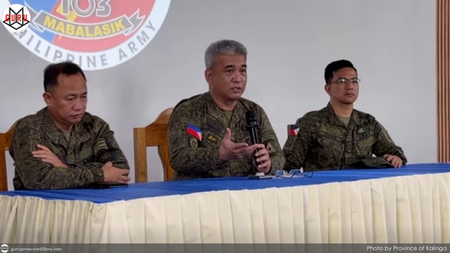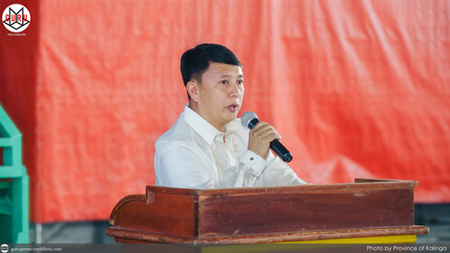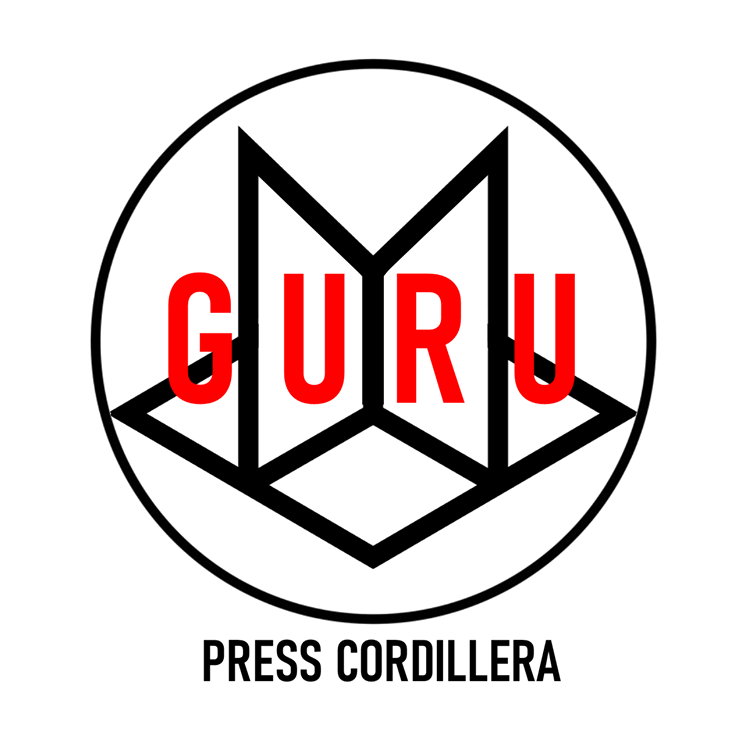Balbalan, Kalinga invites public to witness “PADALANG” – lighting of Christmas village – on December 1
Balbalan, Kalinga – The Balbalan Municipal Compound in Poblacion is set to shine with dazzling lights and festive cheer on December 1, 2025, as the municipality holds its Padalang or Christmas Lighting Ceremony. “Padalang” is a local Kalinga term which means to light up and in Balbalan, it is used to refer to the ceremonial lighting of Christmas decorations or a Christmas village which has become a community tradition that marks the start of the holiday festivities. Spearhead

Leonora Lo-oy
14 hours ago1 min read
Cordillera produces 11 topnotchers in Nov. 2025 Nursing Board Exam
Baguio City, Philippines – Eleven graduates from universities in the Cordillera region excelled in the November 2025 Philippine Nursing Licensure Examination (PNLE), bringing pride and honor to their alma maters. These 11 are among the 40,692 passers of the PNLE held on November 4–5 across various testing centers nationwide. Their success did not end with passing the exam; they also secured spots in the Top 10 list of examinees with the highest ratings. The topnotchers fr

Leonora Lo-oy
2 days ago1 min read
Abrenian beauty finishes Miss International stint as 4th runner-up
Tabuk City, Kalinga – Abrenian beauty and Philippine bet to Miss International 2025, Myrna Esguerra, ended her journey in the prestigious pageant as 4th runner-up. The 63rd Miss International pageant crowned its new titleholder from among 80 dazzling candidates representing their respective countries on November 27 at the Yoyogi National Gymnasium in Shibuya, Tokyo, Japan. Carrying the Philippines with grace and charm, Myrna outshone many candidates and made her way to th

Leonora Lo-oy
2 days ago1 min read
Luna, Apayao is 2025 Freedom of Information National Awardee
ALABANG, Muntinlupa City — The Municipality of Luna, Apayao, under the administration of Mayor Januario S. Garde, was recently recognized as a 2025 Freedom of Information (FOI) National Awardee by the Presidential Communications Office (PCO). The recognition was conferred on November 28, 2025, at The Bellevue, Alabang, and was received by Municipal Vice Mayor Zaira Erika L. Caluya and Secretary to the Sanggunian Erven P. Wanasen, who represented the Municipal Mayor and the

Arjay Baysa
2 days ago1 min read
Rape cases in Tabuk City up by 20.83% this year; 18 arrests made - PNP-Tabuk data from Jan. to Nov. 2025
Tabuk City - While Tabuk City law enforcers and other agencies are working hard to keep peace and order and made progress in other areas, the cases relating to rape remains a challenge with an increase of 20.83% compared to the data last year. During the Consultative Meeting for Duty-Bearer Handling Special Cases (These include Child in Conflict with the Law, Children At Risk, Violence Against Women and their Children, and Child Abuse) on November 27, 2025 at the MHotel in Ap
Brent Martinez
2 days ago2 min read
“Adda pay PATO gang (agtatakaw ti pato), siga-siga gang, ken dadduma pay… tumulong koma ti parientes to look after their kids” Tabuk CSWDO on increase of CICL cases
Tabuk, Kalinga - During the Consultative Meeting for Duty-Bearers Handling Special Cases in Tabuk City, the City Welfare and Development Office, although they didn’t mention the specific number, reported that they saw an increase in cases of Child in Conflict with the Law. Conchita Busaiya, Social Welfare Officer IV of the Protective Services Division, CSWD Office- LGU Tabuk City, informed that most of the cases they attended to involving minors were related to theft and robb
Brent Martinez
3 days ago2 min read


‘I hope LTO has plans on road accidents this coming Christmas… Adda paylang ag ka-karera dita provincial road,’ – VG Odiem
Tabuk City, Kalinga – As preparations for the Christmas season begin, Acting Governor and Vice Governor Dave Odiem reminded motorcycle riders, the Land Transportation Office (LTO), and concerned agencies to take precautionary measures against road and traffic accidents, especially with the expected increase in movement and activity in the province during the holidays. Odiem made the statement during the flag-raising ceremony on November 24, 2025, at the Capitol Gym in Bulanao

Lorraine Bacullo
3 days ago2 min read


THREE Cordillera universities recorded 100% passing rate in Nov. 2025 Nurses Licensure Exam
Lamut, Ifugao - Three universities in Cordillera have achieved a rare academic feat after all their nursing graduates passed the November 2025 Nurses Licensure Examination (NLE), placing the region among the top-performing areas in the country. The Professional Regulation Commission (PRC) announced on November 26 that 40,692 out of the 45,192 examinees successfully passed the nationwide exam conducted on November 4-5. However, the exam in Cebu, Iloilo, and Tacloban was move

Mark Moises Calayan
3 days ago1 min read


Benguet farmers receive over P3M worth of agri machinery to boost production
La Trinidad, Benguet - High-value crop farmers in Benguet recently received over P3,000,000 worth of agricultural interventions from the Department of Agriculture–Cordillera to help them earn more income by increasing their yields. Benguet, according the Department of Agriculture- Special Area for Agricultural Development, is the “leading” vegetable-producing province in the country, earning the title as “ Salad Bowl of the Philippines”. The province, as cited by the agency,

Mark Moises Calayan
3 days ago2 min read


‘Pasusundo namin kayo kahit saan pa at anong oras para maproteksyonan namin kayo,’ - Maj. Gen. Señires assures support to rebels if they surrender
Tabuk City, Kalinga - Following a series of gunfights between government troops and rebels in Pinukpuk, Kalinga, Major General Gulliver Señires, commander of the Philippine Army's 5th Infantry Division, has called on the remaining insurgents to return to the fold of the law, assuring them of government support if they surrender peacefully but warning them of violent attack if they continue to refuse. Señires made the statement during a press conference at the 103rd Infantry

Mark Moises Calayan
3 days ago2 min read


TWO Kalinga OTOP stores launched; One at NAIA Terminal 3, another at Clark International Airport
Tabuk City, Kalinga –The Department of Trade and Industry (DTI) Kalinga has opened its first One Town, One Product (OTOP) store outside the province on November 20, 2025 at the The Travel Store, 3rd Floor, International Departure Area of NAIA Terminal 3, marking a significant expansion of local craftsmanship into a national and global market. Said store is the 29th branch and is first to be launched outside the province, with all 28 other stores located across Kalinga. The OT

Lorraine Bacullo
3 days ago2 min read


‘...neither the Prov’l Officials nor the Adivay Organizing Committee would, in any way, prevent any performer or participant from showcasing their presentation’ - Benguet PLGU on Adivay issue
Benguet, Philippines – Provincial Governor Melchor Diclas released an official statement following the issues circulating on social media regarding one cultural dance group set to perform a Kalinga cultural dance that was stopped from performing in the Adivay Festival grand parade on November 23, sparking concerns from parents and community members who questioned the fairness and adherence to protocol of the decision. In a circulating anonymous post from the ‘Arteks of Lakand

Lorraine Bacullo
3 days ago2 min read


‘… frequent follow-up kuma, baka kunam okay kan. Ngem nu examine daka, adda gayam makitkita nga sabali,’ – Dr. Kub-aron advises epileptic patients to have regular checkups
Tabuk City, Kalinga – As the number of epileptic patients in the province remains high, Kalinga Provincial Hospital (KPH) Child Neurologist Dr. Grael Kub-aron stressed the importance of regular checkups for people with epilepsy. She explained that consistent follow-ups allow doctors to detect subtle changes or early complications that patients may overlook, ensuring timely treatment and better long-term management of the condition. During the First Epilepsy Camp held on Novem

Lorraine Bacullo
3 days ago2 min read


“In the remaining weeks, we focus on addressing the aftermath of Typhoon Uwan” – VG Odiem on fast-tracking recovery for a better Christmas season
Tabuk City, Kalinga – With Christmas fast approaching, Acting Governor and Vice Governor Dave Q. Odiem reminded the public of the true essence of the holiday season and emphasized the need to continue focusing on recovery efforts following the impact of Typhoon Uwan. Super Typhoon Uwan left damages reaching P1.28 Billion as of November 12 report of the Province of Kalinga. The typhoon likewise left many villages isolated and roads, infrastructures, and government facilities d
Mark Jordan Bomogao
3 days ago2 min read


One dead after landslide buried house in Pudtol, Apayao
Pudtol, Apayao – A resident in Aurora, Pudtol was buried in a landslide triggered by the incessant rains in the municipality on Thursday, November 27, 2025. According to the Pudtol PNP, authorities proceeded for a search and rescue response in Purok 2, Aurora after being alerted of a landslide burying a residential house amid the unstable terrain, heavy rain, and further risk of soil movement in the area. The operation resulted in the recovery of one body who did not sur

Leonora Lo-oy
4 days ago1 min read

.png)










































































Comments